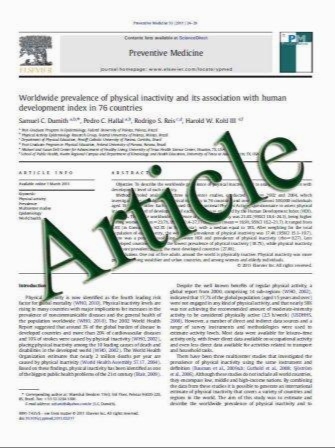The rexinoid bexarotene represses cyclin D1 transcription by inducing the DEC2 transcriptional repressor
- نوع فایل : کتاب
- زبان : انگلیسی
- مؤلف : Yuxin Li Qiang Shen Hee-Tae Kim Reid P. Bissonnette William W. Lamph Bingfang Yan Powel H. Brown
- چاپ و سال / کشور: 2010
Description
Bexarotene is an RXR-selective vitamin A analog that has been shown to prevent ER-negative mammary tumorigenesis in animal models. While investigating the mechanism by which bexarotene prevents ER-negative breast cancer development, we found that the expression of cyclin D1, a critical cell cycle promoter, was repressed by bexarotene in vitro and in vivo. Time course and cycloheximide experiments show that repression of cyclin D1 is a late effect and requires new protein synthesis. Previously we discovered that DEC2 (differentially expressed in chondrocytes-2), a helix–loop–helix transcription repressor, was induced by bexarotene in human mammary epithelial cells. Therefore, we hypothesized that bexarotene represses the transcription of cyclin D1 through induction of DEC2. Luciferase reporter studies demonstrated that either bexarotene treatment or forced expression of DEC2 can repress the transcription of a cyclin D1 promoter reporter by affecting the basal transcriptional activity. Results from chromatin immunoprecipitation experiments showed that bexarotene treatment causes the recruitment of DEC2 and HDAC1 (histone deacetylase 1) to the cyclin D1 promoter. Co-immunoprecipitation confirms the interaction between DEC2 and HDAC1, suggesting that the recruitment of HDAC1 to the cyclin D1 promoter is through DEC2. Trichostatin A, a HDAC inhibitor, reverses the cyclin D1 repression by bexarotene, suggesting that repression of cyclin D1 involves histone deacetylation. Knock-down of DEC2 by siRNA abolishes the cyclin D1 repression, further supporting our hypothesis. Finally, we demonstrated that overexpression of DEC2 dramatically inhibited cell proliferation and repressed the expression of cyclin D1 in human mammary epithelial cells. These results suggest that bexarotene down-regulates cyclin D1 through induction of DEC2, followed by recruitment of HDAC1 to the cyclin D1 promoter causing transcriptional repression. By elucidating the mechanism by which rexinoids inhibit cell proliferation, it will be possible to develop more effective and less toxic drugs to prevent ERnegative breast cancers.
Breast Cancer Res Treat (2011) 128:667–677 Received: 16 July 2010 / Accepted: 19 July 2010 / Published online: 7 September 2010 Springer Science+Business Media, LLC. 2010


